New Year’s Eve history and traditions
The end of the year is approaching and it is a time for balance sheets and reflections but also for hopes, wishes, and expectations in the new year.
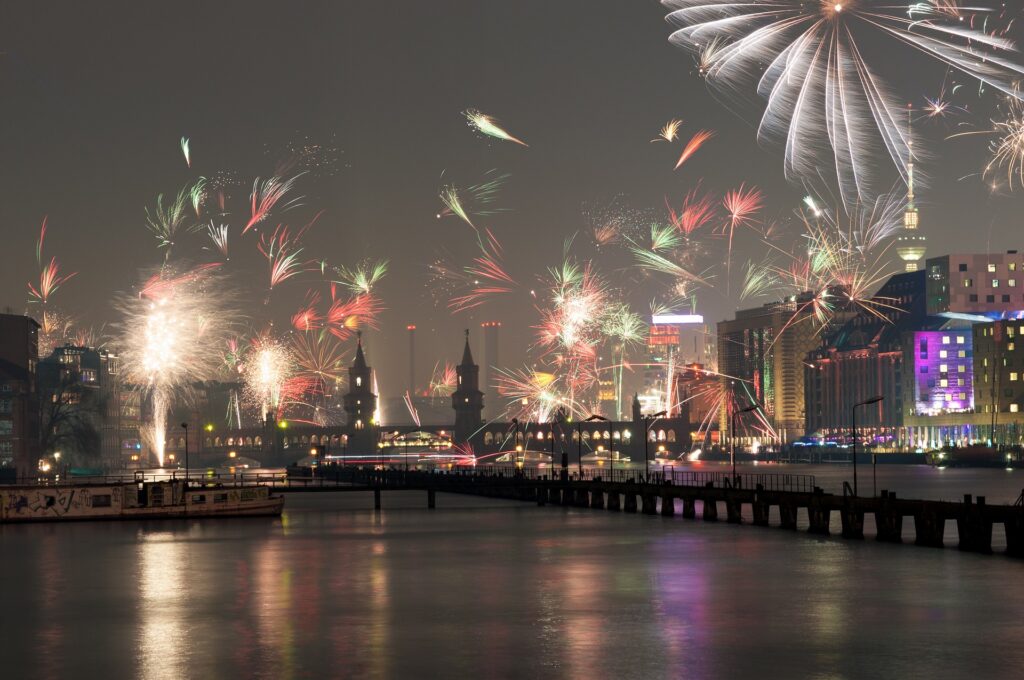
New Year’s Eve, or St. Sylvester’s night, corresponds to the night between December 31 and January 1 (New Year’s Day) and is celebrated in different ways depending on the nation. New Year’s Eve is also called Saint Sylvester’s Night because December 31 is dedicated to the saint, namely Pope Sylvester a very important figure in the history of Christianity, as under his pontificate pagan Rome gave way to Christian Rome, while preserving certain rites and ceremonies. He died on December 31, 335, after 21 years of pontificate.
New Year’s Day, a term derived from the head of the year, is a time of reckoning and evaluation that marks the passage from one year to the next bringing with it good intentions and hope for the future. This holiday traces its pagan origins back to 46 B.C. and originated at the hands of Gaius Julius Caesar with the establishment of the Julian calendar. New Year’s Eve celebrations date back to the pagan festival in honor of the “Roman god Janus,” hence the name given to the month of January, which was celebrated immediately after the Saturnalia, or Roman festivals that closed the year. In 1691, the different dates on which New Year’s Day was celebrated in European countries were converged on January 1 by Pope Innocent XII.
The night of St. Lawrence between traditions and legends
Traditions in Europe
In almost all European countries, fireworks and loud bangs play an important role on New Year’s Eve.This tradition dates back to Germanic tribes, who wanted to drive away evil spirits with a loud noise.
In Switzerland, New Year’s Eve fireworks light up the skies of many Swiss cities to mark the end of the year. The biggest fireworks displays are held in Ascona, Basel, Crans-Montana, Lucerne and Zurich. A typical New Year’s Eve meal is raclette and fondue. At midnight toasts are made with sparkling wine or champagne. There are also traditions and celebrations at the local level. The Appenzell people, for example, have long rejected the Gregorian calendar: today they celebrate New Year’s Eve twice, on December 31 and January 13 by parading in traditional costumes, masks and elaborate hats, wishing Happy New Year with jingling bells. In Lausanne in Canton Vaud, on the other hand, there is a silent celebration around the illuminated cathedral: “to each his own New Year’s Eve party” is the motto of the “Bô Noël” celebrations. Here, each visitor is given wireless headphones with three channels and can choose at any time which of the three DJs he or she wants to listen to and which rhythms he or she wants to dance to. To onlookers, the whole thing looks exhilarating from the outside where a dancing crowd can be seen without any audible sound. In Rheinfelden, on the other hand, Germany and Switzerland have joined forces to jointly organize a large fireworks display over the Rhine. In Interlaken (Canton Bern) people celebrate on ice on the large ice rink set up in the city center. Top of the Europe Ice Magic is a large village on the ice complete with a restaurant, stalls offering raclette and other specialties, as well as the inevitable mulled wine and chocolate. In Grindelwald (Canton Bern), the village’s main street is transformed into a large dance floor from 10 p.m. to 4 a.m. In Hospental (Canton Uri) New Year’s Eve is celebrated with sleigh rides on the village streets that turn into icy slopes. In Lugano (Canton Ticino) on the long night of New Year’s Eve, Piazza della riforma is transformed into a big open-air disco with DJ sets and lights and special effects.
In England there is a big celebration in London, where crowds gather at the London Eye Ferris wheel. The special feature of British fireworks is the staging of lasers and lighting technology. When the bells of Big Ben ring midnight and thus the New Year, the British sing “Auld Lang Syne” and make their wishes for the New Year.
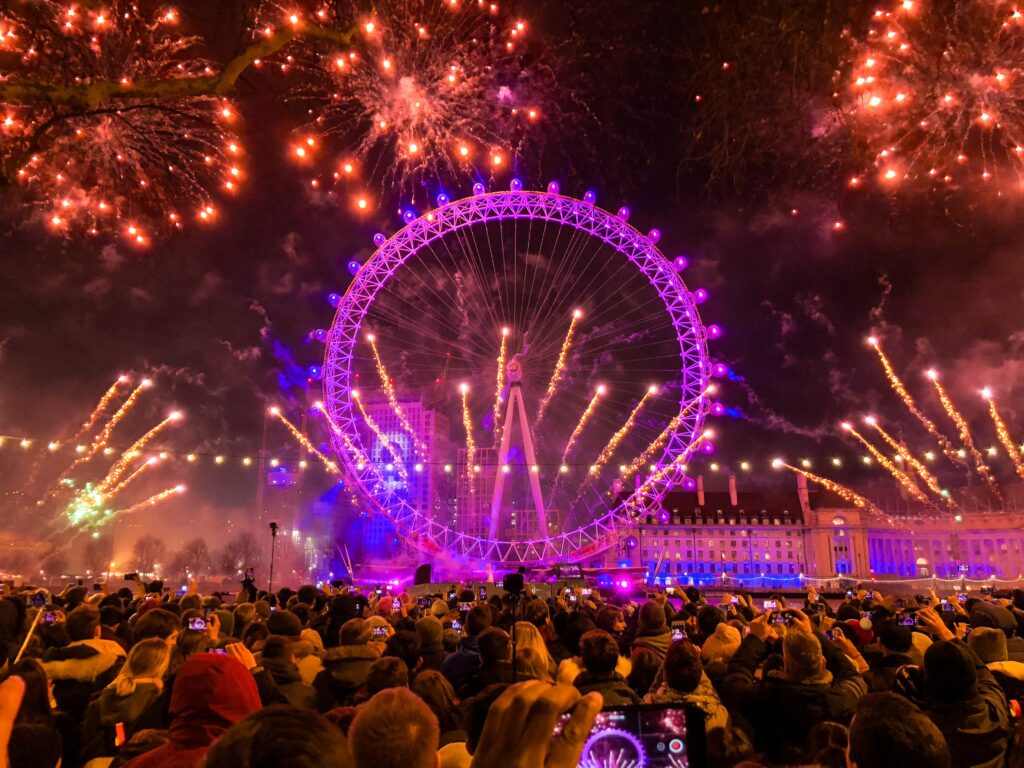
In Scotland New Year is one of the most important Scottish holidays, called “Hogmanay,” which can last up to three days i.e. from New Year’s Eve to the morning of January 2. The customs of “Hogmanay” are a mixture of the pagan winter solstice and the Viking Yule. The Scots, toast with a glass of whiskey although the classic New Year’s drink is the “Hot Pint,” a mix of beer, whiskey and eggs that is drunk during torchlight processions with bagpipe music. At midnight, like the British, they sing the song “Auld Lang Syne.”
In Spain, Spaniards use to spend the last night of the year eating delicious food and drinking good wine with their families and then go out together and participate in various parties in the streets. At midnight they use to toast with glasses of champagne in which a gold ring has been thrown that is supposed to bring good luck. Women also wear red underwear so that the New Year will be full of passion. At the stroke of midnight, Spaniards use to eat a grape for every chime of the bells so that all their wishes will come true. Those who have not finished by the 12th chime of the bell are considered unlucky.
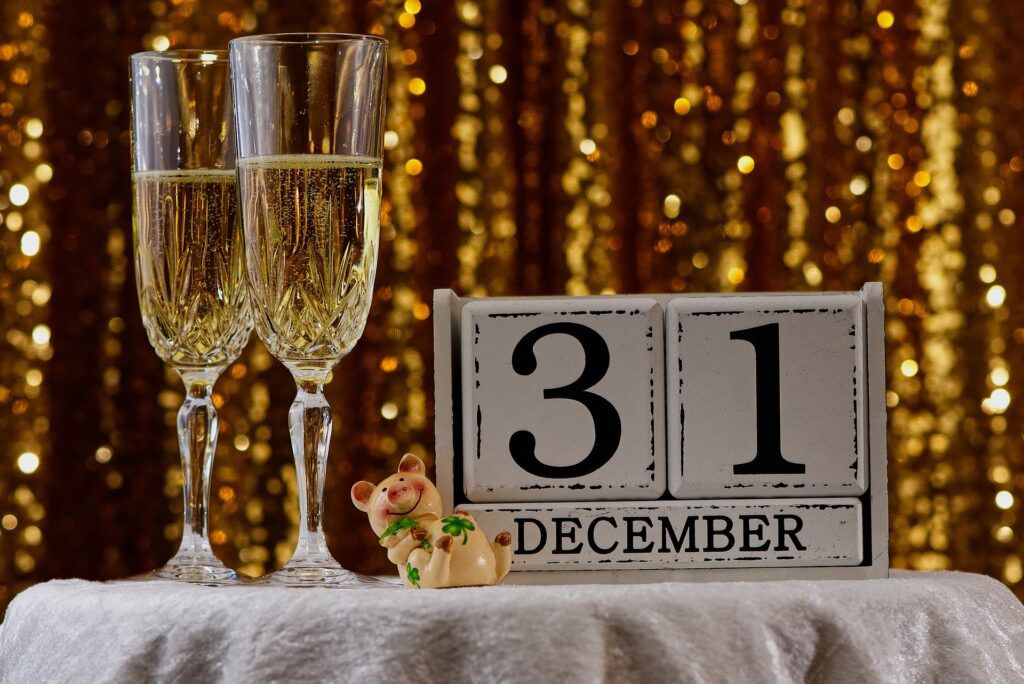
In Portugal, at midnight, Portuguese people hold a coin tightly in their hands that is supposed to bring them economic good luck. In addition, people bang pots and pans together or break dishes to drive away evil spirits with a good deal of noise. According to the Portuguese, also bathing in the new year and wearing new clothes also brings good luck and economic benefits.
In Italy, a plate of lentils with pork shank is traditionally served at midnight. Lentils resemble coins, and are supposed to bring prosperity and wealth. Italian women (and to some extent men) like to wear red underwear on New Year’s Eve to celebrate love, health, happiness and passion in the new year.
In Vienna, Austrians in Vienna’s City Hall Square dance the Viennese waltz as the bell of St. Stephen’s Cathedral tolls in the New Year. But even at home, in a club or on many streets around the country, people celebrate the passing of the year by waltzing.
In Denmark it is customary to jump into the New Year from a chair or even a table at the stroke of midnight.
In Russia, just before midnight, people write their New Year’s wishes on a piece of paper and set fire to it. The ashes of the burned paper are then placed in a glass of champagne and drunk. It is also customary to open the door of the house exactly on the 12th chime of midnight to better welcome the New Year. It should be mentioned that Christmas celebrations last about two weeks in this country: first we celebrate Catholic Christmas on December 25, then New Year’s Eve on December 31, then Orthodox Christmas on January 7, and finally Old New Year’s Eve on January 13.
In Holland it is said to bring good luck to eat Oliebollen, pancakes with candied fruit, raisins, sometimes apples and currants, fried in pork fat or butter and covered with sugar. Writing a wish on a piece of paper, burning it and throwing it into a glass of champagne to be drunk before midnight and a minute is also supposed to bring good luck in the New Year.
Public holidays in the Swiss Confederation
Traditions in South America
In Brazil, Brazilians light candles on beaches: White candles, symbolize purity and peace, yellow candles symbolize prosperity in the new year, and red candles promise love and passion.
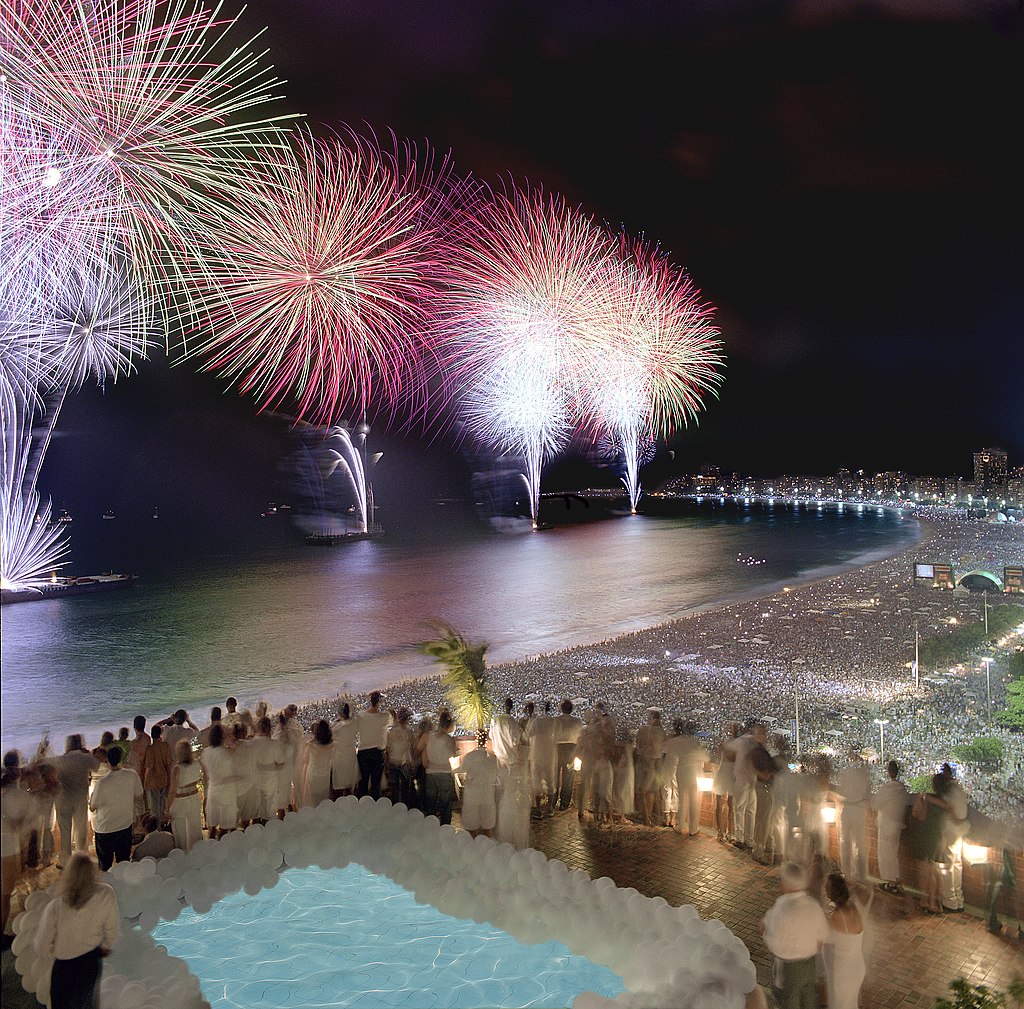
The most famous celebrations are held on Copacabana Beach. Because white is synonymous with purity and peace, Brazilians like to wear white clothes on New Year’s Eve, with which they jump over waves in the sea water on New Year’s Eve. For each wave jumped, the person in question can make a wish for the New Year.
In Argentina, at the stroke of midnight everyone has to step forward with their right leg to start the New Year on the right foot. In addition, tearing up old papers and documents and throwing their shreds out the window serves to get rid of anything useless.
Traditions in North America
In the United States, Americans traditionally eat lentil soup, which is supposed to bring them good luck. Important is the tradition of “nothing goes out” in which citizens are not allowed to leave the house, not even to throw out the trash or empty the mailbox otherwise they may have bad luck in the New Year.
Those who prefer to go wild outdoors go to one of the many masquerade balls or to the world’s legendary and largest New Year’s Eve party in Time Square – New York. Every year, thousands of people from all over the world gather to witness, in addition to the spectacular fireworks, the “ball drop” where the ball begins the 60-second countdown to midnight and descends on a 23-meter-high pole.
Time Square also hosts the ” Wishing Wall” where people write their New Year’s wishes on post-it notes and hang them on the wall. These are then collected, mixed and thrown into the air like confetti.
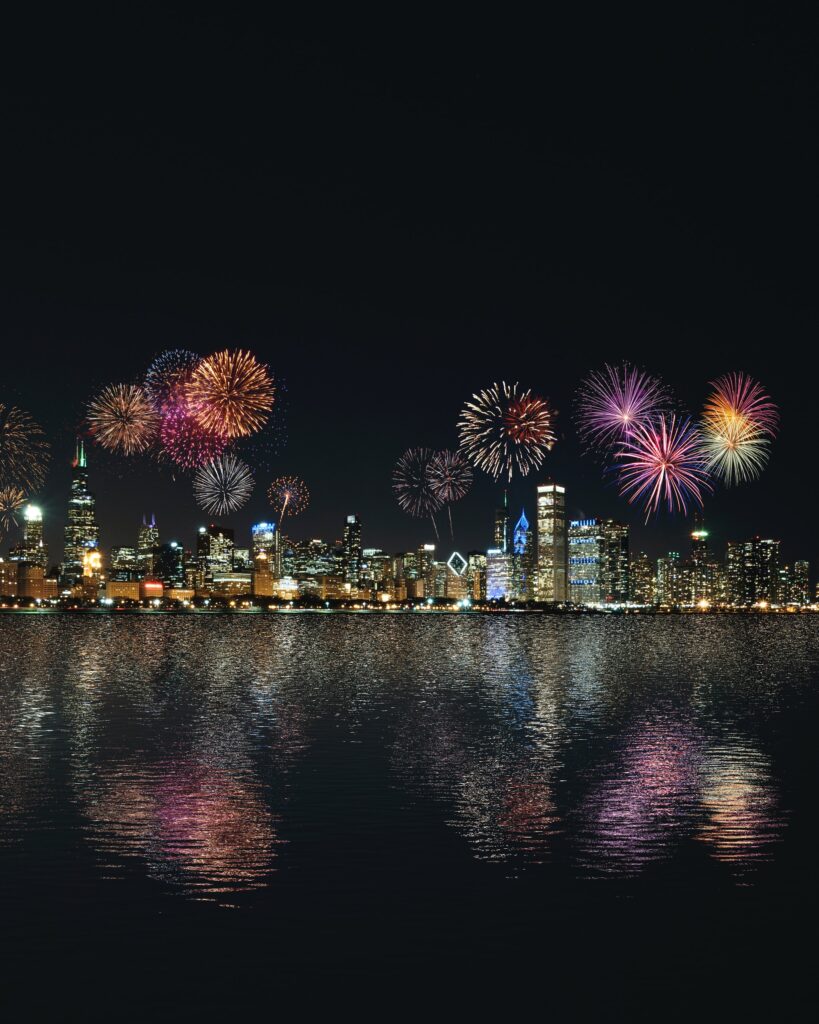
Howland Island, a small island administered by the United States is the last place in the world where New Year’s Eve arrives but no one will be counting down since this remote island in the Pacific is uninhabited.
In Canada, the New Year is celebrated with the traditional “Polar Bear Swim,” or a dip in the icy waters of the country’s rivers and lakes.
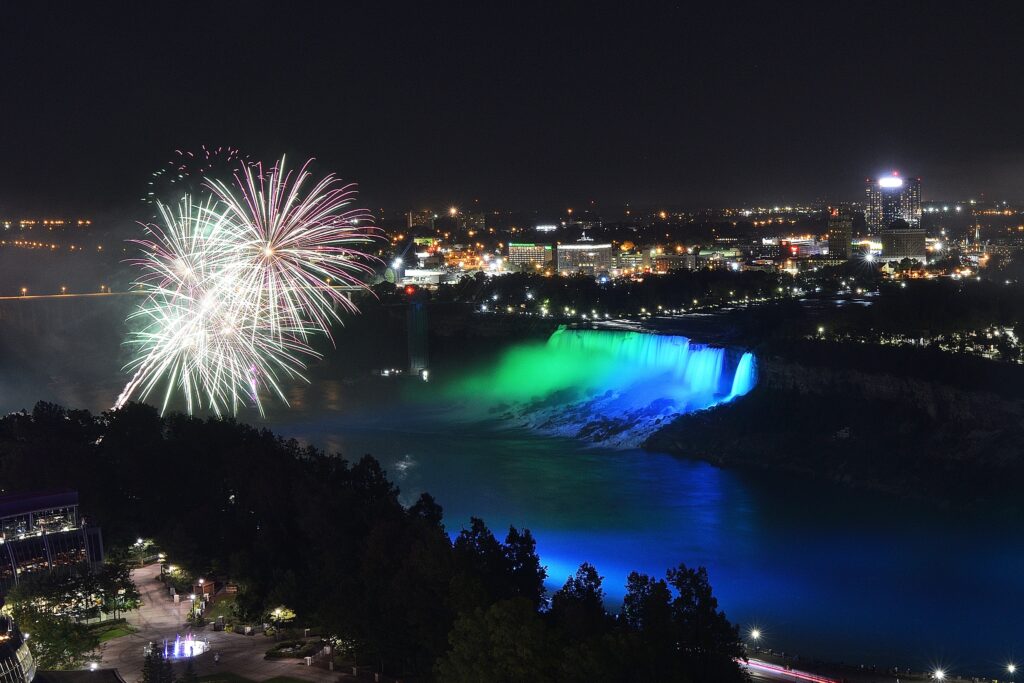
August 15 holiday with different traditions
Traditions in Asia
In China, the Chinese spend Western New Year with loved ones while celebrating Chinese New Year about a month later according to the traditional lunar calendar with the whole family. As many millions of Chinese go back to their home villages, the New Year celebration commemorates a migration of peoples. During the family dinner, small dumplings in the shape of old Chinese coins are served that are supposed to bring wealth. Unmarried women throw mandarins into the sea to attract men to marry. An hour before the end of the year, all Chinese people open their windows to bring good fortune.
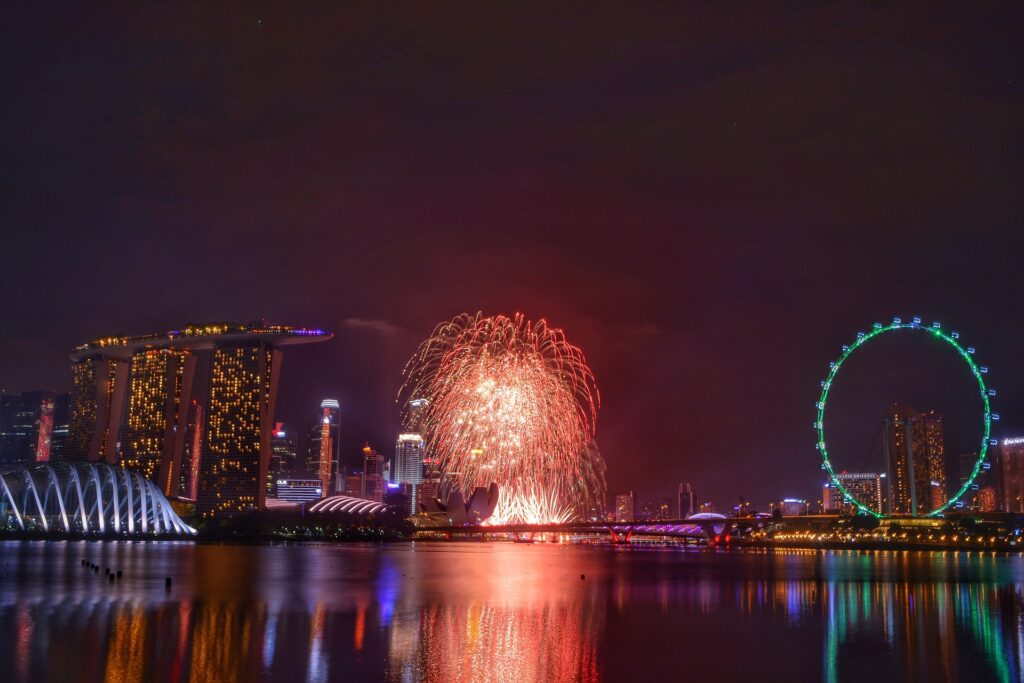
In Japan, the Japanese celebrate the holiday on “Bonenkai,” together with friends and family by cleaning the “old dirt” from houses and decorate everything with flowers and pine trees to drive away evil spirits and start the New Year purified. The classic New Year’s meal is the rice dumpling “mochi.” After dinner, the Japanese go to one of the many temples to get rid of the sins of the past year. In Buddhist temples, bells ring 108 times and expel a sin with each strike. Afterwards, illuminated balloons with New Year’s greetings are released from the temple.
In the Philippines, New Year’s Eve is about round things: the table where people eat must be round and decorated with many round fruits, people give each other coins and wear polka-dotted clothes.
In Turkey until a few decades ago, New Year’s Eve was not celebrated, but over the years, it has become customary for restaurants and clubs to organize dinners with special menus and themed parties for the night of December 31. Today, even for Turks, New Year’s Eve is a festive occasion and is synonymous with dinner parties, square gatherings and fun. According to local traditions opening all taps at the stroke of midnight brings wealth and blessings to the family.
In the United Arab Emirates, New Year’s Eve is considered a secular holiday, not particularly heartfelt but celebrated in major cities such as Dubai and Abu Dhabi. Due to its climate with winter temperatures above 25°C, the country is one of the ideal destinations for those looking for something different such as desert excursions. The main fireworks are those at Burj Khalifa (the world’s tallest tower) and Atlantis (one of the most luxurious hotels in Dubai).
Traditions in Africa
In Muslim-majority countries, chicken is eaten on New Year’s Eve-a luxury for those living in poorer countries. In general, no major celebrations are held in countries on this continent.
South Africa is one of the few countries where large celebrations are held, and in the capital city of Cape Town a colorful carnival is celebrated with extravagant costumes, faces painted white, loud music and rumbling drums. The tradition of the “Bat Carnival” originates from the time of slavery when on “Emancipation Day” in the 1830s, slaves in South Africa were freed. The highlight of the celebrations is the January 2 parade where thousands of “minstrels” dance around the city and celebrate the transition to the new year with music and dancing. It is also called “Tweede Nuwe jaar” (Second New Year).
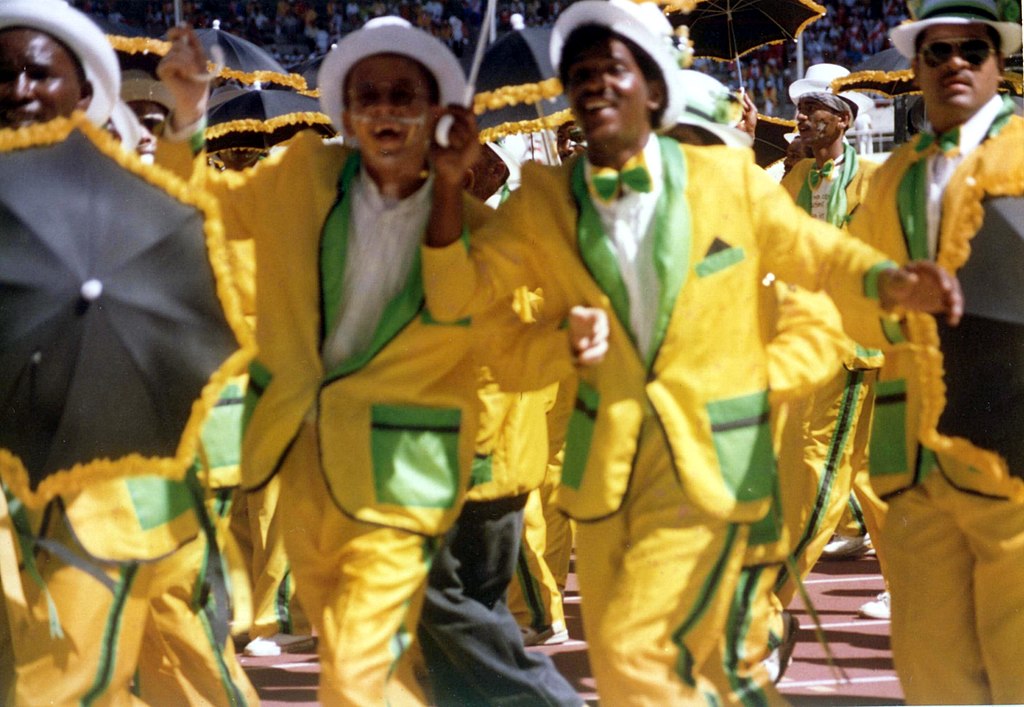
In Kenya, the city of Nairobi hosts the grandest celebration with musical performances and fireworks while Mombasa is famous for beach parties with live music. It is also customary to leave the cities to spend New Year’s Eve in more rural areas.
Ethiopia exclusively uses the Coptic calendar in which New Year’s Day is celebrated on September 11. This festival is known as Enkutatash and lasts three days with religious ceremonies, singing and feasting. However, large hotels in major cities such as Addis Ababa host New Year’s Eve parties on December 31.
Traditions in Oceania
In Oceania there are no particular traditions related to New Year’s Eve, but it arrives earlier because this is where each new day begins, to be precise on the island of Christmas, better known as Kiribati, which is part of the Equatorial Sporades archipelago and is the first place ever to celebrate.
Only an hour later it is the turn of New Zealand, and the islands of Fiji and Tuvalu, which share the same time zone.

Australia is very large and in fact has 3 different time zones. The western one is the same as the Philippines and China, the central one coincides with Japan and the Indonesian islands, and the eastern one is exclusively Australian. Sydney is famous for its parties, which are crazy and fun. The great beaches are the perfect place to get wild and party on New Year’s Eve. The Sydney Harbour Bridge is transformed into a giant giant screen where you can watch the countdown and after midnight, there is the famous fireworks display that makes Australia’s star, of the most beautiful fireworks displays.





